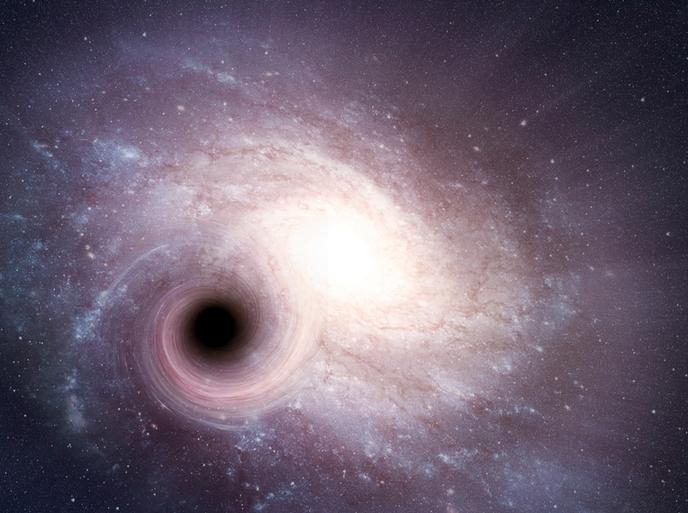Trending Science: Mysterious black hole discovered that shouldn’t exist
The Hubble Space Telescope has detected an unexpected thin disc of material surrounding a supermassive black hole in the middle of spiral galaxy NGC 3147 located 130 million light years away. An international team of astronomers from Spain, Italy, Israel and the United States are completely surprised by its existence. In a study published in the journal ‘Monthly Notices of the Royal Astronomical Society’, the scientists claim that the black hole shouldn’t have a large disc of matter surrounding it, according to Einstein’s theories of relativity. NGC 3147’s black hole weighs about 250 million times more than the Sun. It should be starving because there isn’t enough material in the galaxy to feed it. Discs contain stars, gas and dust, and are normally found in extremely active galaxies characterised by bigger black holes. Light given off by the disc mimics a supermassive black hole’s behaviour at the centres of much more active galaxies. Oddly enough, NGC 3147 was first selected to prove discs couldn’t form around smaller black holes. Understanding how less-active galaxies operate The light visible from the disc in NGC 3147 gives the astronomers a rare opportunity to test Einstein’s general and special theories of relativity that concern how space, time, light and gravity fit together. The disc is deep in the black hole’s gravitational field. It modifies light in such a way that the astronomers can actually see what’s going on close to the black hole. The scientists were only able to come up with this unexpected discovery because of telescopes like Hubble. It kept the light out from the surrounding galaxy to help examine the speed, temperature and other features of the matter inside the swirling disc. By measuring the disc’s material, Hubble enabled them to determine that it’s spinning around the black hole at over 10 % the speed of light. A unique look at the dynamic processes close to a black hole “This is an intriguing peek at a disc very close to a black hole, so close that the velocities and the intensity of the gravitational pull are affecting how we see the photons of light,” lead author Stefano Bianchi of the Roma Tre University in Italy told the United Kingdom’s ‘Daily Mail’. Speaking to ‘CNN’, study author Marco Chiaberge, senior European Space Agency astronomer at the Space Telescope Science Institute and Johns Hopkins University, said: “We’ve never seen the effects of both general and special relativity in visible light with this much clarity.” “The type of disc we see is a scaled-down quasar that we did not expect to exist,” Prof. Bianchi explained. “It’s the same type of disc we see in objects that are 1 000 or even 100 000 times more luminous. The predictions of current models for very faint active galaxies clearly failed.”



